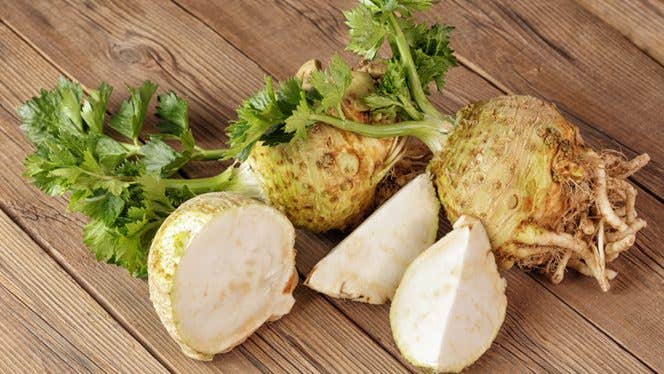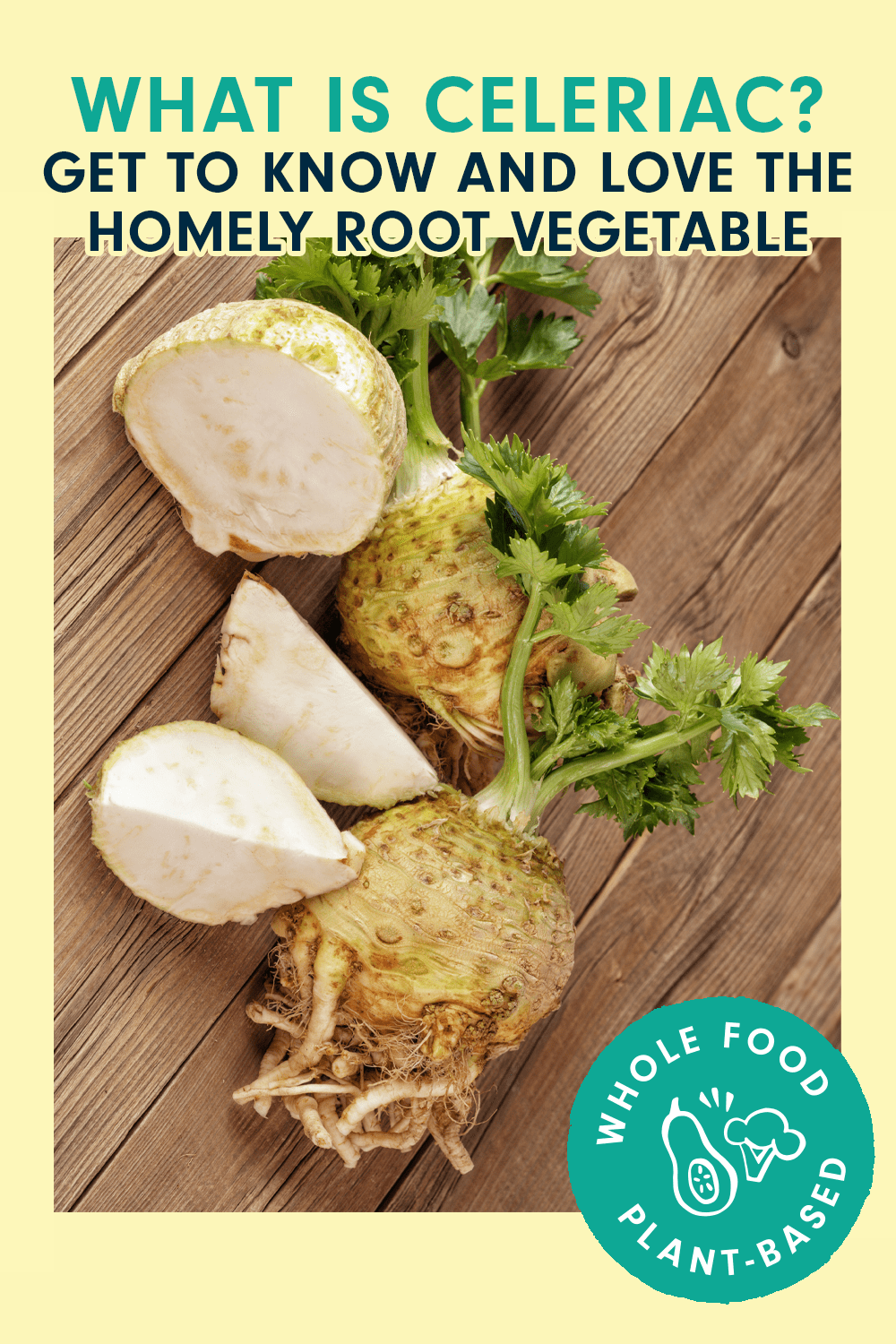
What Is Celeriac? Get to Know and Love the Homely Root Vegetable
Celeriac, aka celery root, may not be the prettiest vegetable on the produce display—but don’t be put off by its brown, knobby exterior. The white flesh within is distinctive, sweet and very versatile. Read on to learn everything you need to know to enjoy the funny-looking root vegetable, including selection and storage tips, easy ways to prepare it, and how to include it in your favorite recipes.
What Is Celeriac?
Celeriac is a type of celery grown for its root rather than its stalks. It’s a popular vegetable in Europe and North Africa, where it’s a favorite in salads, soups, and stews. The slow-maturing veggies are planted in the spring then harvested in the fall and winter. Like leeks, celeriac is often left in the ground and harvested as needed. Once peeled, celeriac can be used raw like a carrot or cooked like a potato.
How to Pronounce It
“Celeriac” is pronounced suh-LEHR-ee-ack.
What Does Celeriac Taste Like?
Celeriac’s flavor is sweet and nutty with a distinctive celery flavor. Unlike many root vegetables, it has a relatively low starch content. Its pale, fine-grained flesh is firm and crunchy when raw, creamy and slightly fibrous when cooked. One of the reasons it's such a popular soup and stew ingredient is because it simultaneously lends its taste to cooking liquids and absorbs the flavors of other ingredients.
How Do You Cook with Celeriac?
Boil it, steam it, roast it, mash it—anything you can do with a potato or sweet potato, you can also do with celery root. In fact, you can use celeriac to replace some or all of the potatoes called for in most recipes.
Celeriac is also an ideal option for oil-free roasting. The veggie’s high moisture content allows it to cook through and brown well without turning mushy (much like cauliflower). Give it a try by roasting peeled cubes of celeriac on a parchment or silicone mat-lined baking sheet for 30 to 35 minutes at 375˚F. Or make roasted veggie steaks which are seasoned with just a hint of sherry vinegar.
Celeriac’s low-starch nutritional profile means it can be blended into a smooth purée without turning stiff or gummy. Try blending it to make Creamy Celeriac Pasta Alfredo, in which peeled and steamed celeriac is blended with pine nuts, sautéed onion and garlic, nutritional yeast, and a little plant milk for a low-fat vegan Alfredo sauce.
Raw celeriac is wonderful when grated and used in salads. Grated celeriac can be used in place of or in addition to grated carrots and beets or shredded cabbage in most recipes. Give it a try in our Moroccan Carrot-Beet Salad or Veggie and Apple Slaw.
How to Roast a Whole Celeriac
Roasted celery root makes a stunning side dish, though takes a while to cook. First, scrub it well to remove any dirt, then wrap in foil and roast in a 400˚F oven for 1½ to 2 hours. Remove the foil, and roast it 20 to 30 minutes more, or until the skin is crisp and it feels soft, like a baked potato. Cut the roasted celeriac in wedges, or slice off the top and scoop out the soft flesh in the center and serve like mashed potatoes.
How to Peel and Prep Celeriac
You’ll need a sharp knife to deal with celeriac’s rough, rooty exterior. Here’s how to prep it:
1. Trim the stalk end of the celeriac to remove any stalks still attached to the root and reveal the white flesh inside. The stalks and leaves are edible and can be used to flavor dishes like fresh herbs. They are usually too bitter and stringy to use in place of celery stalks.
2. Cut the celeriac in half, lengthwise or widthwise depending on its size and shape. (It doesn’t matter which way you cut the root; you just need to have a flat side to stabilize the vegetable on your work surface.) Set one celeriac half cut-side-down on a cutting board, and slice off the skin and any roots in large strips using a chef’s knife or paring knife. Discard the skin (or use it in a vegetable broth), then cut or grate the flesh as desired.
Tip: Once celeriac has been peeled, it begins to brown, like an apple. The discoloration won’t affect the veggie’s flavor, but if you want your cut or grated celeriac to remain creamy white, dunk it into a solution of 2 tablespoons lemon juice or vinegar and 4 cups water. Cut celeriac can be stored for three days in this acidulated water.
Selection and Storage
Celery root is available year-round in the refrigerated section of most well-stocked supermarkets and at farmers markets during the cooler months.
Choose celeriac roots with smooth, unblemished skin. The root should feel rock hard and be at least 3 to 4 inches in diameter. Smaller specimens don’t have much flesh on them after the outer skin is trimmed away, while larger roots can be stringy and bitter.
Store in a paper bag or breathable container in the fridge crisper drawer for up to 3 weeks.
Celeriac Recipes
Ready to get cooking? Try one of these fresh and tasty celeriac recipes from Forks Over Knives!
- Roasted Celeriac Steaks with Mushrooms and Sweet Potato Mash
- Creamy Celeriac Pasta Alfredo
- Moroccan Carrot-Beet Salad
- Veggie and Apple Slaw

About the Author

About the Author
Mary Margaret Chappell
Join our mailing list
Get free recipes and the latest info on living a happy, healthy plant-based lifestyle.
By providing your email address, you consent to receive newsletter emails from Forks Over Knives. We value your privacy and will keep your email address safe. You may unsubscribe from our emails at any time.
